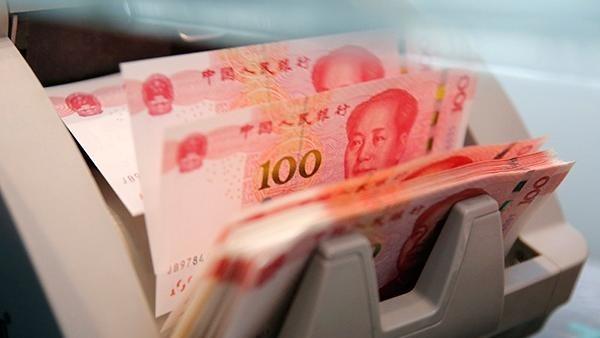 In this undated file photo, Chinese 100 yuan banknotes are seen in a counting machine while a clerk counts them at a bank in Beijing. (PHOTO PROVIDED TO CHINA DAILY)
In this undated file photo, Chinese 100 yuan banknotes are seen in a counting machine while a clerk counts them at a bank in Beijing. (PHOTO PROVIDED TO CHINA DAILY)
China's fiscal revenue rose by 4.7 percent during the third quarter of the year on the back of sustained economic recovery and robust industrial output, while government spending is expected to shore up growth in the subsequent months, according to the Ministry of Finance.
Looking forward to the fourth quarter, the robust economic growth will be further consolidated, and the main economic indicators, such as industrial output, corporate profits, imports and exports, will continue to recover, which in turn will boost major tax income, said Liu Jinyun, director of treasury payment center at the Ministry of Finance
Fiscal revenue rose to 14.1 trillion yuan (US$2.1 trillion) by September. In September alone, fiscal revenue rose by about 8 percent on a yearly basis, the year's highest single-month growth, the ministry said on Wednesday.
Tax income rose by 8.2 percent in September on a yearly basis because of faster industrial output growth and accelerated recovery in the services sector. Higher corporate profits and robust imports have also contributed to the tax growth, said Liu Jinyun, director of treasury payment center at the Ministry of Finance.
Looking forward to the fourth quarter, the robust economic growth will be further consolidated, and the main economic indicators, such as industrial output, corporate profits, imports and exports, will continue to recover, which in turn will boost major tax income, while the ministry will unveil more steps to ensure sound fiscal conditions, Liu said.
To ensure that the corporate sector, especially smaller businesses, can recover from the COVID-19 shocks, the ministry will continually cut taxes and fees to achieve an annual goal of more than 2.5 trillion yuan, said Chen Donghao, deputy head of the tax policy department of the Ministry of Finance.
ALSO READ: China's industrial output up 4.8% year-on-year in July
China's proactive fiscal policy has strongly supported the economic growth in the first three quarters, analysts said, and the policy stance will be maintained in the coming months as some vulnerable sectors still need supportive policies to sustain recovery.
The stimulus package that China has issued will continue to boost government-led infrastructure investment in some key areas, including high-speed rail, road and metro networks related to the urbanization strategy, and shore up economic growth in the next two to three years, according to Ivy Poon, a senior analyst with Moody's Investors Service.
The Ministry of Finance said on Wednesday that issuances of local government special bond, a debt instrument which mainly raises funds for infrastructure projects, had reached 3.69 trillion yuan in the first nine months of the year, accounting for 98.6 percent of the annual quota.
ALSO READ: China's local govt bond issuance hits 720.5b yuan in September
The bonds collected funds for seven major areas, including transportation infrastructure, energy, agriculture, environment protection and logistics. Local government special bonds are not allowed to swap the existing debt, pay salaries, pensions, interests and enterprises' subsidies, according to Wang Kebing, an official from the ministry's budget department.
The ministry urged local governments to deliver capital into specific projects as soon as possible, in order to contribute to the GDP growth rather than being a part of the national treasury, the official said.
READ MORE: Finance minister: China's fiscal policy will be more positive
David Chao, global market strategist for the Asia-Pacific (ex-Japan) region of Invesco, said China may adopt a "wait-and-see" policy in the near term as the recent macroeconomic data have shown stable economic growth momentum.
"The fiscal stimulus since the COVID-19 outbreak reached around 7 percent of China's GDP, compared with 13 percent in the United States and 21 percent in Japan," said Chao.
The current debt level may hold back the government's plan of launching additional fiscal stimulus measures, he said. Policy makers may be cautious in issuing new stimulus policies and want to save enough "ammunition" in case of "unexpected risks" if the pandemic situation worsens.


